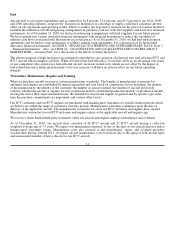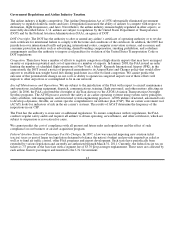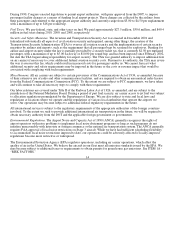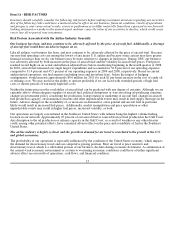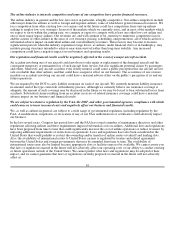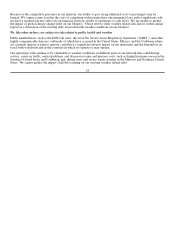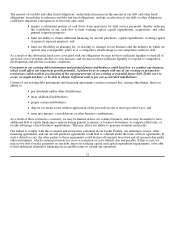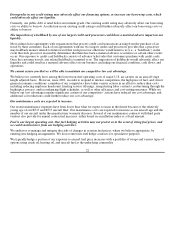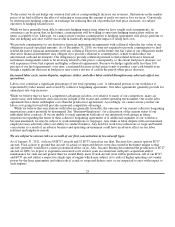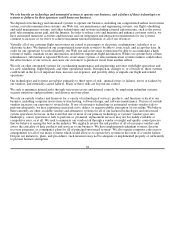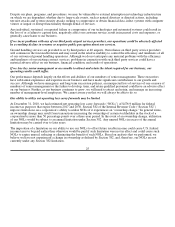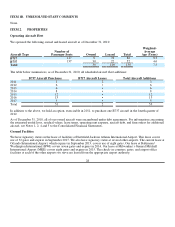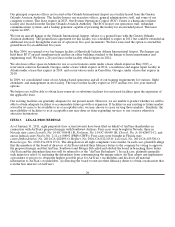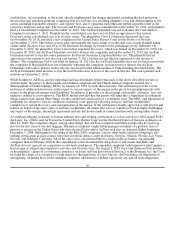Airtran 2010 Annual Report Download - page 29
Download and view the complete annual report
Please find page 29 of the 2010 Airtran annual report below. You can navigate through the pages in the report by either clicking on the pages listed below, or by using the keyword search tool below to find specific information within the annual report.
The amount of our debt and other fixed obligations, and potential increases in the amount of our debt and other fixed
obligations, an inability to refinance our debt and fixed obligations, and any acceleration of our debt or other obligations
could have important consequences to investors and could:
• require a substantial portion of cash flows from operations for debt service payments, thereby reducing
the availability of our cash flow to fund working capital, capital expenditures, acquisitions, and other
general corporate purposes;
• limit our ability to obtain additional financing for aircraft purchases, capital expenditures, working capital
or general corporate purposes; and
• limit our flexibility in planning for, or reacting to, changes in our business and the industry in which we
operate and, consequently, place us at a competitive disadvantage to our competitors with less debt.
As a result of the substantial fixed costs associated with our obligations we may not have sufficient liquidity to fund all of
our fixed costs if revenues decline or costs increase; and we may not have sufficient liquidity to respond to competitive
developments and adverse economic conditions.
Covenants in our existing debt instruments and potential future indebtedness could limit how we conduct our business,
which could affect our long-term growth potential. A failure by us to comply with any of our existing or prospective
restrictions could result in acceleration of the repayment terms of our existing or potential future debt. If this were to
occur, we might not have, or be able to obtain, sufficient cash to pay our accelerated indebtedness.
Certain of our existing debt instruments and financing agreements contain covenants that, among other things, limit our
ability to:
• pay dividends and/or other distributions;
• incur additional indebtedness;
• prepay certain indebtedness;
• dispose of certain assets without application of the proceeds in one or more specified ways; and
• enter into mergers, consolidations or other business combinations.
As a result of these restrictive covenants, we may be limited in how we conduct business, and we may be unable to raise
additional debt or equity financing to operate during general economic or business downturns, to compete effectively, or
to take advantage of new business opportunities. This may affect our ability to generate revenues and profits.
Our failure to comply with the covenants and restrictions contained in our Credit Facility, our indentures, leases, other
financing agreements, and our aircraft purchase agreements could lead to a default under the terms of those agreements. If
such a default occurs, the other parties to these agreements could declare all amounts borrowed and all amounts due under
other instruments, which contain provisions for cross-acceleration or cross-default, due and payable. If that occurs, we
may not be able to make payments on our debt, meet our working capital and capital expenditure requirements, or be able
to find additional alternative financing on acceptable terms or sustain our operations.
21


